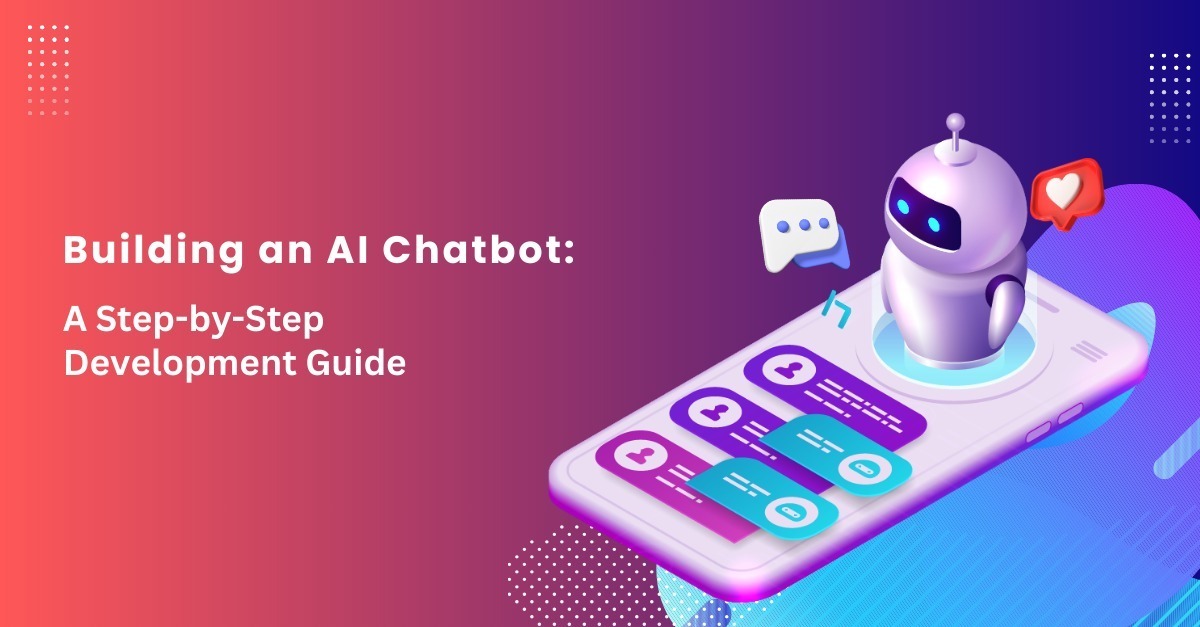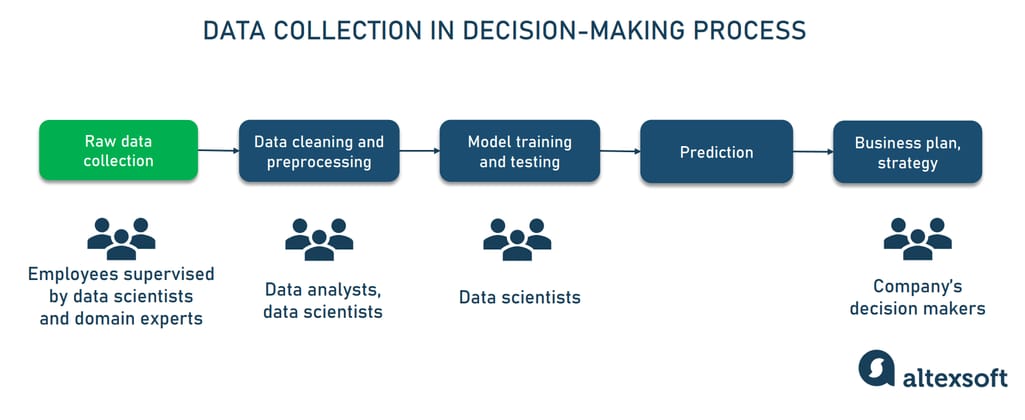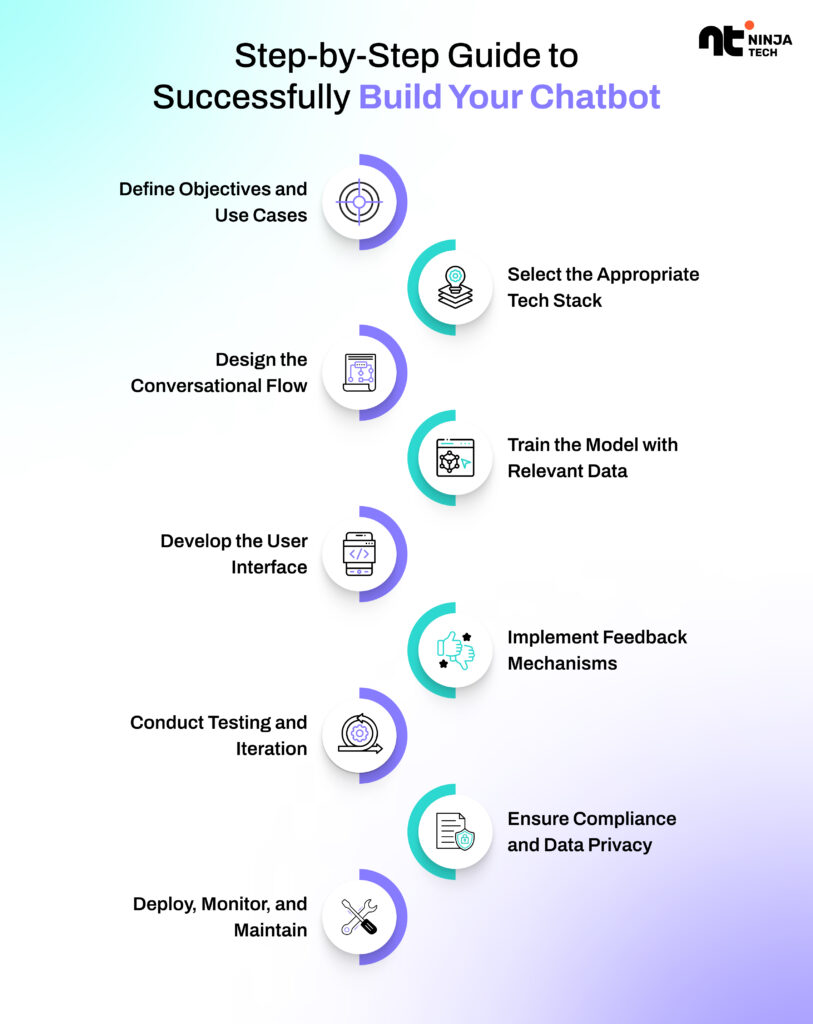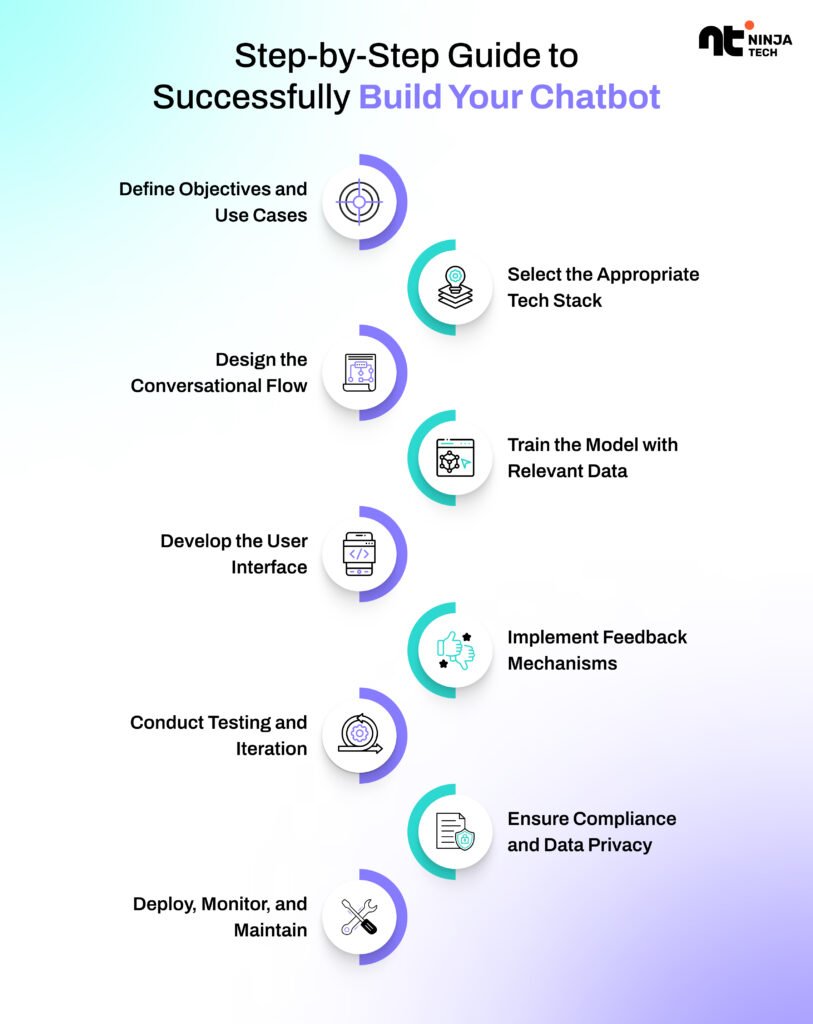
Introduction
Overview of Chatbots and Machine Learning
In today’s digital age, chatbots have emerged as sophisticated tools that leverage machine learning to mimic human-like conversations. By employing algorithms that sift through vast datasets, chatbots can understand user inputs and respond appropriately. For example, consider a customer seeking assistance with an online order; a well-trained chatbot can answer queries instantly, significantly enhancing user experience.
Importance of Chatbots in Business
Chatbots hold immense potential for businesses across various sectors. Their importance is underscored by the following benefits:
- 24/7 Availability: Chatbots are always on, providing round-the-clock customer support without the need for human intervention.
- Cost Efficiency: They reduce operational costs by automating routine queries, allowing human agents to focus on complex issues.
- Enhanced User Engagement: Through personalized interactions, chatbots can bolster customer satisfaction and retention.
Businesses embracing these technologies, like those showcased at TECHFACK, are not only staying competitive but are also reshaping how they engage with their customers.

Building Blocks of Chatbots
Understanding Natural Language Processing (NLP)
At the heart of any effective chatbot is Natural Language Processing (NLP). This field of artificial intelligence enables machines to comprehend and interpret human language in a meaningful way. Imagine having a conversation where the chatbot can not only respond to queries but also grasp the context. This is where NLP shines, employing techniques such as:
- Tokenization: Breaking down sentences into individual words or phrases.
- Sentiment Analysis: Assessing user emotions to tailor responses.
- Named Entity Recognition: Identifying key information (like names or dates) within a conversation.
A well-implemented NLP framework allows chatbots to engage users in a natural and intuitive manner.
Basics of Machine Learning for Chatbots
Machine Learning (ML) is foundational for training chatbots to handle diverse interactions. By learning from historical data, chatbots improve over time. Key aspects include:
- Supervised Learning: Training with labeled data for accurate predictions.
- Unsupervised Learning: Identifying patterns without pre-existing labels.
For instance, a chatbot that learns from previous customer interactions can become adept at resolving issues more efficiently, much like how companies showcased at TECHFACK have utilized these technologies to refine their customer service frameworks.

Designing Your Chatbot
Planning the Chatbot Flow
Once the foundational concepts of NLP and machine learning are in place, designing the chatbot’s flow becomes paramount. This involves mapping out how users will interact with the chatbot, ensuring a seamless experience. A well-structured flow might include:
- Greeting and Introduction: Welcoming the user and clarifying the chatbot’s capabilities.
- User Queries: Anticipating common questions and formulating appropriate responses.
- Escalation Pathways: Defining when to transfer complex issues to human agents.
Imagine crafting an engaging conversation akin to a friendly chat at a coffee shop—keeping the flow natural yet informative is essential.
Choosing the Right Platform for Development
After defining the flow, selecting the appropriate development platform is next. This choice shapes your chatbot’s functionality and ease of integration. Consider these factors:
- User Interface: Ensure it supports the desired communication style.
- Supported Integrations: Look for compatibility with existing systems, like CRM or e-commerce platforms.
- Scalability: Choose a platform that can grow with your business needs.
By tapping into resources shared on TECHFACK, developers can select platforms that suit their specific requirements, enhancing both user experience and operational efficiency.

Data Collection and Preprocessing
Gathering Training Data
With a solid design in place, the next vital step in building chatbots with machine learning is gathering training data. This data serves as the cornerstone for teaching your chatbot how to respond accurately to user interactions. Here are some effective sources to consider:
- User Interactions: Analyze historical chat logs or customer service transcripts.
- Surveys and Feedback: Collect input from users about their queries, preferences, and pain points.
- Public Datasets: Utilize available datasets tailored for conversational AI, such as those found on platforms like Kaggle.
Think of it as compiling a library of conversations— the richer your dataset, the more informed and responsive your chatbot will be.
Cleaning and Preparing Data for Model Training
After gathering the data, it’s critical to clean and prepare it for model training. This step ensures your chatbot learns from quality data. Key actions include:
- Removing Irrelevant Information: Eliminate noise, such as typos or unrelated content.
- Standardizing Formats: Ensure all entries follow a consistent structure.
- Data Augmentation: Generate variations of existing data to improve robustness.
By meticulously cleaning the data, you’re essentially gearing up your chatbot for success, setting the stage for effective learning that reflects the insights shared at TECHFACK.
Implementing Machine Learning Models
Introduction to Neural Networks
With your cleaned dataset in hand, it’s time to implement machine learning models, and one of the most exciting approaches is through neural networks. These models are inspired by the human brain and consist of interconnected layers of nodes (neurons) that process information. Here are some key features:
- Input Layer: Takes in your training data, such as user queries.
- Hidden Layers: Where the magic happens—patterns are recognized, and transformations occur.
- Output Layer: Provides the final response or prediction.
Neural networks are especially useful for chatbots because they can handle complex patterns and learn nuances in language, making conversations feel more organic and engaging.
Training the Chatbot Model
Once you have your neural network set up, the next step is training the chatbot model. This involves feeding your prepared data into the network and fine-tuning its parameters. Consider these important aspects:
- Splitting Data: Divide your dataset into training and testing subsets to evaluate performance.
- Choosing an Optimizer: Utilize algorithms like Adam or SGD to adjust weights in the network for better accuracy.
- Monitoring Metrics: Track metrics such as loss and accuracy to ensure the model learns effectively.
This iterative process resembles nurturing a plant—you must continually prune and adjust until it thrives. As discussed on TECHFACK, focusing on these training strategies paves the way for robust, responsive chatbots capable of understanding and engaging users effectively.
Integrating Chatbot with User Interface
Creating an Interactive User Experience
Having successfully trained your chatbot model, the next step is to integrate it with a user interface that fosters interaction. This is crucial, as the aesthetics and usability of your interface dictate how users engage with your chatbot. Consider these elements to create an interactive user experience:
- Visually Appealing Design: Utilize clean layouts, intuitive button placements, and appealing color schemes to attract attention.
- Conversational Tone: Reflect the brand’s personality through friendly, engaging responses that resonate with users.
- Multi-Channel Availability: Ensure your chatbot is accessible through various platforms, whether on a website, mobile app, or social media.
Imagine hosting a party—your chatbot should feel like an engaging guest rather than a wallflower, inviting users to converse freely.
Handling User Input and Providing Responses
Once the UI is in place, it’s time to focus on the mechanics of handling user input and delivering responses. This involves establishing how the chatbot interprets and reacts to queries. Key strategies include:
- Understanding Variability: Anticipate different phrasings and contexts, so the chatbot can handle diverse user inputs confidently.
- Quick Response Time: Aim for instantaneous replies to keep users engaged, mirroring the immediacy of human conversation.
- Error Handling: Implement fallback messages and guides for when the chatbot misinterprets a user query, ensuring users never feel ignored.
This back-and-forth interaction is reminiscent of great conversations—well-timed, intelligent responses make all the difference. By integrating these principles, you’re set to enhance user interaction, akin to the best practices highlighted on TECHFACK.

Testing and Deploying the Chatbot
Evaluating Chatbot Performance
With the chatbot integrated and functioning, it’s crucial to evaluate its performance to ensure optimal user experience. This testing phase helps identify areas for improvement and fine-tuning. Key evaluation strategies include:
- User Testing: Enlist real users to interact with the chatbot, gathering feedback on its utility and engagement.
- Performance Metrics: Monitor key indicators such as response accuracy, time taken to respond, and user satisfaction scores.
- A/B Testing: Experiment with different responses and flows to determine which performs better.
Think of this phase as a dress rehearsal before the big show—ensuring that everything runs smoothly and meets customer expectations is vital.
Deploying the Chatbot to Different Platforms
Once performance evaluations are complete, the next step is deploying your chatbot across various platforms. A multi-channel approach ensures broader accessibility. Consider these deployment options:
- Websites: Integrate the chatbot into your business website for direct customer support.
- Messaging Apps: Leverage platforms like Facebook Messenger, WhatsApp, or Slack to reach users where they already converse.
- Mobile Applications: For a more tailored experience, embed it within your mobile app.
By taking these steps, your chatbot can effectively interact with users across multiple platforms, making it a versatile tool for customer engagement, much like the proven strategies discussed on TECHFACK.

Monitoring and Improving Chatbot Performance
Tracking Metrics and User Interactions
After successfully deploying your chatbot, the journey doesn’t end there—it’s crucial to monitor its performance continuously. Tracking relevant metrics and user interactions provides valuable insights into how well the chatbot is meeting user needs. Here are some key metrics to consider:
- Engagement Rate: Measure how often users interact with the chatbot versus how many visits occur.
- Resolution Rate: Track the number of queries successfully handled without needing human intervention.
- User Feedback: Collect ratings or comments from users about their experiences, highlighting strengths and areas for improvement.
This phase is akin to continuous training during an athlete’s career—regularly assessing and refining performance ensures ongoing success.
Continuous Learning and Updates
In addition to tracking metrics, implementing continuous learning strategies is essential to keep your chatbot relevant. This involves:
- Retraining the Model: Periodically update the chatbot’s training on new data to improve accuracy and understanding.
- Incorporating Feedback: Use user feedback to refine responses and adjust the conversation flow.
- Feature Upgrades: Regularly roll out new features or enhancements based on evolving customer demands.
By embracing this iterative approach, your chatbot can adapt and grow, much like the lessons learned from industry innovations shared on platforms such as TECHFACK. This ensures it remains an indispensable tool for user engagement and support.
Ethical Considerations in Chatbot Development
Addressing Bias and Fairness
As chatbot technology advances, it’s essential to prioritize ethical considerations, particularly in addressing bias and fairness. Bias can unintentionally seep into chatbots through training data, leading to skewed responses that may exclude or misrepresent certain groups. To combat this, developers should:
- Diverse Data Sets: Utilize inclusive datasets that represent a wide range of demographics, ensuring that conversations are equitable.
- Regular Audits: Conduct periodic reviews of chatbot interactions to identify and correct any biased patterns or responses.
- Feedback Mechanisms: Establish channels where users can report biases, enabling continuous improvement in how the chatbot communicates.
By committing to fairness, developers build trust and foster a more inclusive environment for all users.
Ensuring User Privacy and Data Security
Equally important is the need to ensure user privacy and data security. As chatbots handle sensitive information, protecting user data should be paramount. Here are some vital practices:
- Data Encryption: Use encryption protocols to safeguard user interactions from unauthorized access.
- Transparency: Clearly communicate to users how their data will be used, fostering a sense of trust.
- Compliance with Regulations: Adhere to laws such as GDPR or CCPA to safeguard user rights and privacy.
Incorporating these ethical practices not only protects users but bolsters the reputation of brands, aligning perfectly with the principles highlighted on TECHFACK. A responsible chatbot not only serves its purpose but also champions user integrity and confidence in digital interactions.
.jpg)
Conclusion
Recap of Key Steps in Building Chatbots with Machine Learning
As we wrap up our exploration of building chatbots with machine learning, it’s essential to recap the key steps that pave the way for successful implementation. From understanding natural language processing to designing user-friendly interfaces, each step adds to the chatbot’s robustness. Remember to focus on:
- Data Collection and Preprocessing: Gathering diverse and relevant data for model training.
- Model Implementation: Utilizing neural networks and machine learning to enhance performance.
- Testing and Monitoring: Continuously improving through user feedback and performance metrics.
These foundational steps create a responsive and effective chatbot ready to engage users seamlessly.
Future Trends in Chatbot Development
Looking ahead, the future of chatbot development is bright and brimming with potential. Emerging trends include:
- AI-Powered Personalization: Chatbots becoming increasingly adept at personalizing interactions based on user preferences and behavior.
- Voice-Activated Interfaces: Growing integration of voice technology, making interactions more accessible and natural.
- Expanded Functionality: Incorporation of multi-tasking capabilities, allowing chatbots to perform complex tasks seamlessly.
As discussed throughout this article, embracing these trends will not only enhance user experience but also position brands at the forefront of innovation, as echoed in insights shared on TECHFACK. The journey of chatbot development is an exciting one, with endless possibilities for enhancing communication and support in the digital realm.

